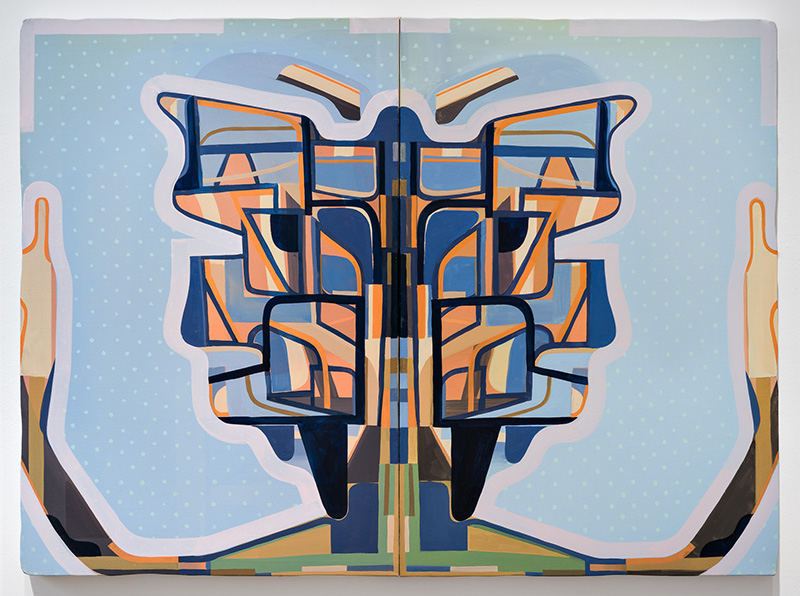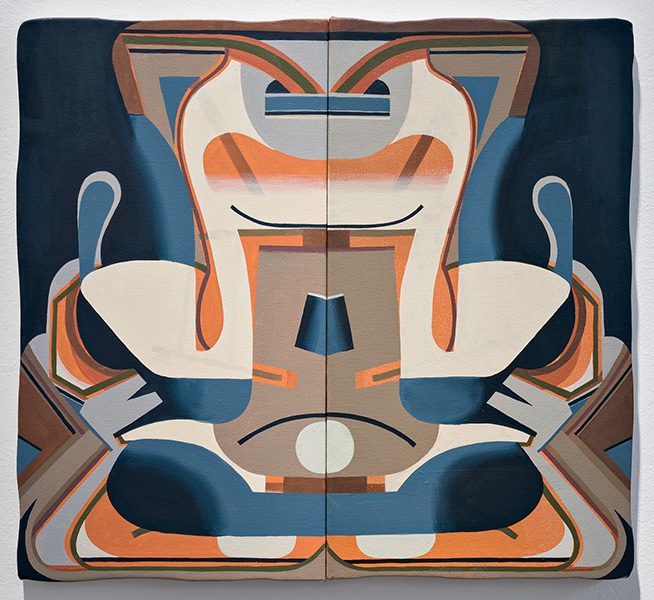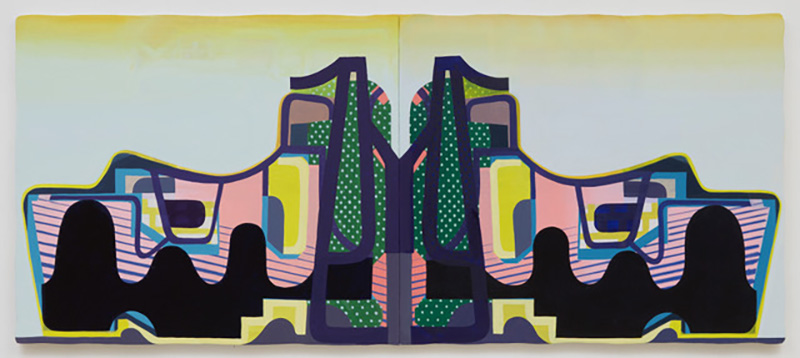
April 30, 2019
Tom Burckhardt @ Gregory Lind
by David M. Roth
Tom Burckhardt continues to be one of my favorite painters for the simple reason that he refuses to be hemmed in by any of the last-century orthodoxies that continue to shadow the present. His main achievement has been to respectfully blur the once-important distinctions that separated representation from abstraction.
If you saw his last exhibition in this space (City Slang, 2016) you’ll see a lot in this one that looks familiar: oblique references to landscape rendered in bold colors; real-world referents comically painted; and, most prominently, paint applied in semi-transparent layers that allow occluded vestiges of earlier works to bleed through to the surface – revealing in their thinness, the weft and warp of the underlying fabric. Close inspection also shows, as it did earlier, that the edges of his stretchers are gently incised — an apparent nod to the hoopla that once surrounded the arcane issue of edge treatment back in the day.
So why, then, does this show, Psychodiagnostic, look markedly different than the one that preceded it? For openers, all of the works are diptychs in which both sides are painted identically. More significantly, Burckhardt, in this series, takes imagery that was formerly of secondary importance and brings it to the fore. It’s as if a Chinese New Year parade had collided with a swarm of monarch butterflies and found itself pinned, like so many specimens, to the wall of a gallery. Open “maws” and leering “dragon eyes” stare out from within insect bodies, replete with wings, antennae and protruding abdomens. Not every picture in the show adheres to this schema, but most do; and if they look a bit like Rorschach blots, well, that is because the artist begins each painting with a single abstract image which he then replicates. The heraldic shapes and mask-like forms that emerge from this process bring to mind the mythological creatures found in Southeast Asian temples. The effect borders on ghoulish.
Burckhardt injects a few small innovations. He uses bubble wrap to imprint circular shapes the size of a dime, which, at a distance, resemble grimacing emoji but are really just inchoate marks. They cluster around the edges of Ornithology, a painting whose central image more closely resembles a hexagram inside a pagoda than it does a bird. Another small but significant shift has to do with the width of the lines he uses to define enclosed volumes; they recall those used by LA painter John Millei for the same purpose.
Like any worthy explorer, Burckhardt sprinkles breadcrumbs across paths newly trod. In one instance, they lead to a work reminiscent of those seen his last show, which, as it happens, is the centerpiece of this one. It’s titled Call and Response, a landscape topped by a sulfurous “cloud.” Whether the setting is urban or rural is hard to say. There are black “smokestacks,” shaped like cartoon ghosts; polka-dotted “towers” readable as support structures for a bridge; and kidney-shaped “ponds” crisscrossed by pink-and-blue lines that can be taken as crop rows – or something else. I hedge because Burckhardt’s oeuvre is resolutely open-ended. His paintings stand as free-associative tests, revealing as much about the viewer as they do the maker.



